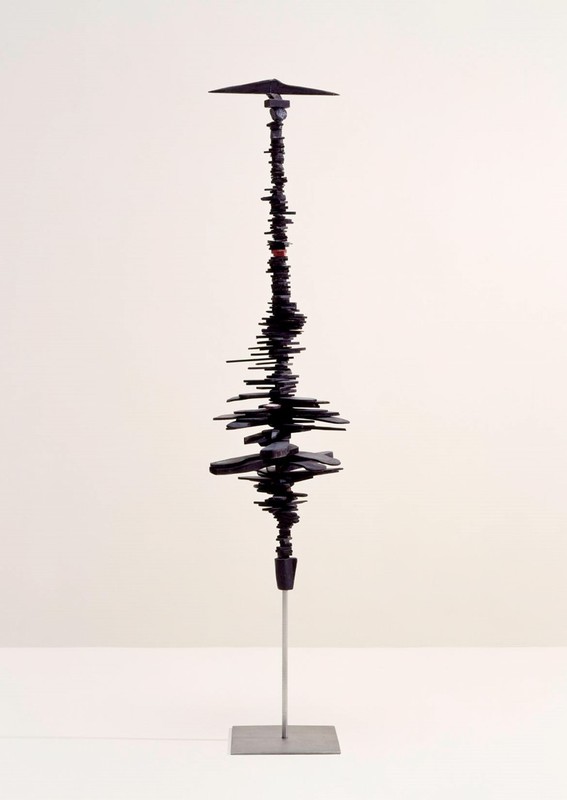1951
1951
In 1951, Louise Bourgeois created the sculpture "Fickle Woman." What she was trying to display in this sculpture was that regardless of where a person is in life, they will always end up back home. This idea strikes Bourgeois hard because she had a hard time getting over the affair that her father had with the nanny of their home as a child. The black wooden boards are pointed in all directions and have different lengths to show that life can take a person in all sort of directions. However, all the boards are fused to the stainless steel rod in the middle, which represents home. Twenty years after Suzanne Valadon created her Self-Portrait showing her displeasure about being objectified, Bourgeois releases this sculpture that reveals not much as changed in twenties years. This work can be read as finding your way home, because women can be looked at as a home object. This sculpture is described as a self portrait, but Bourgeois could have pictured herself as the solid foundation of her own household as well. Since the work has a sense of balance amongst the chaos, she sees herself as that balanced figure.
